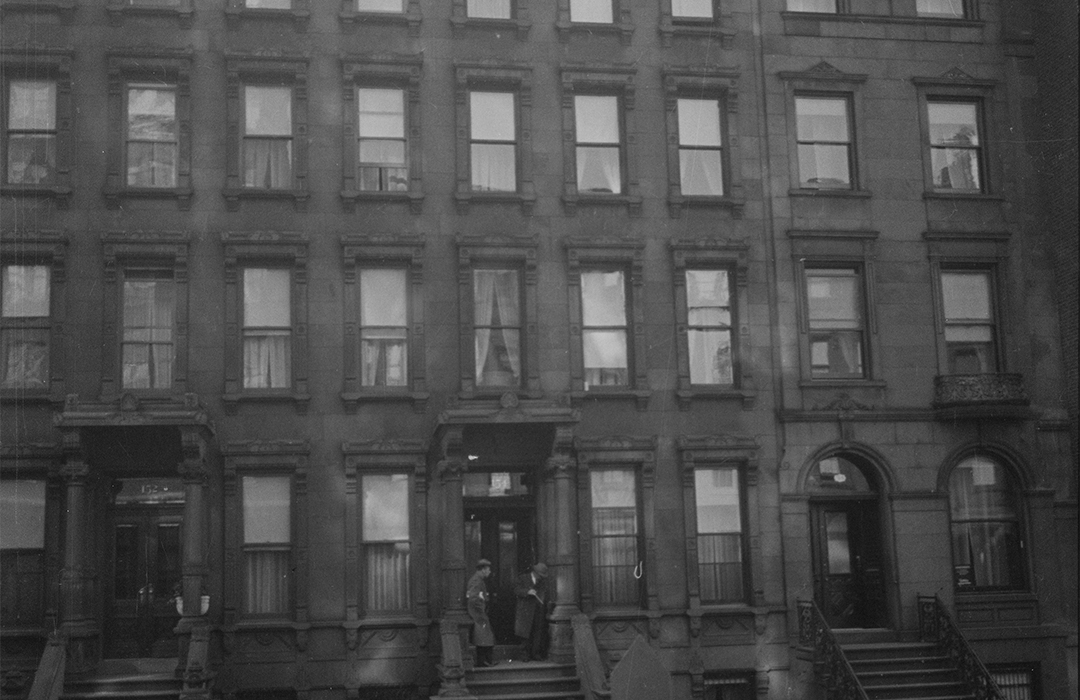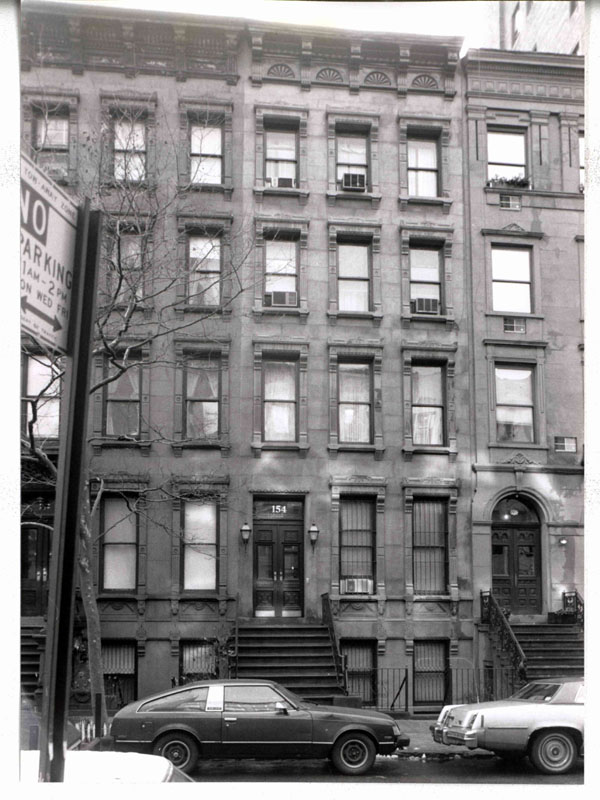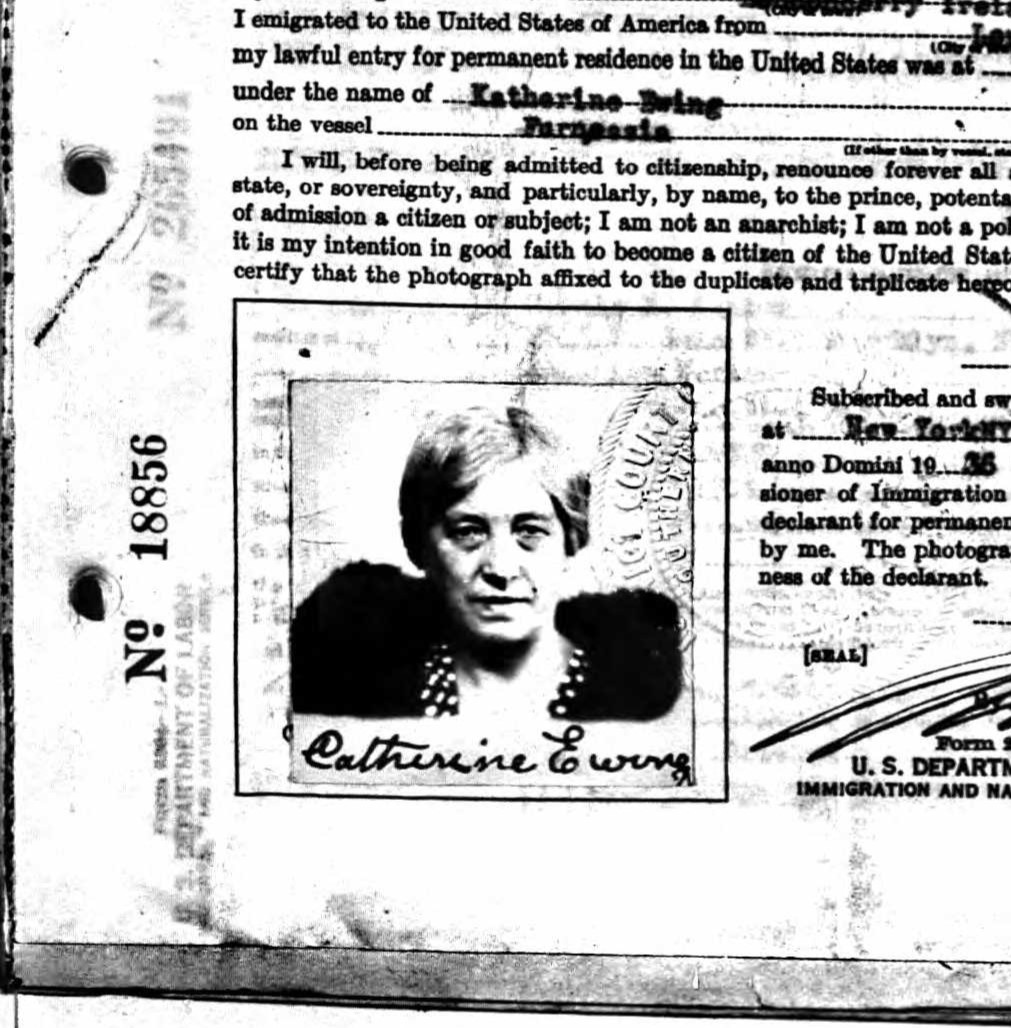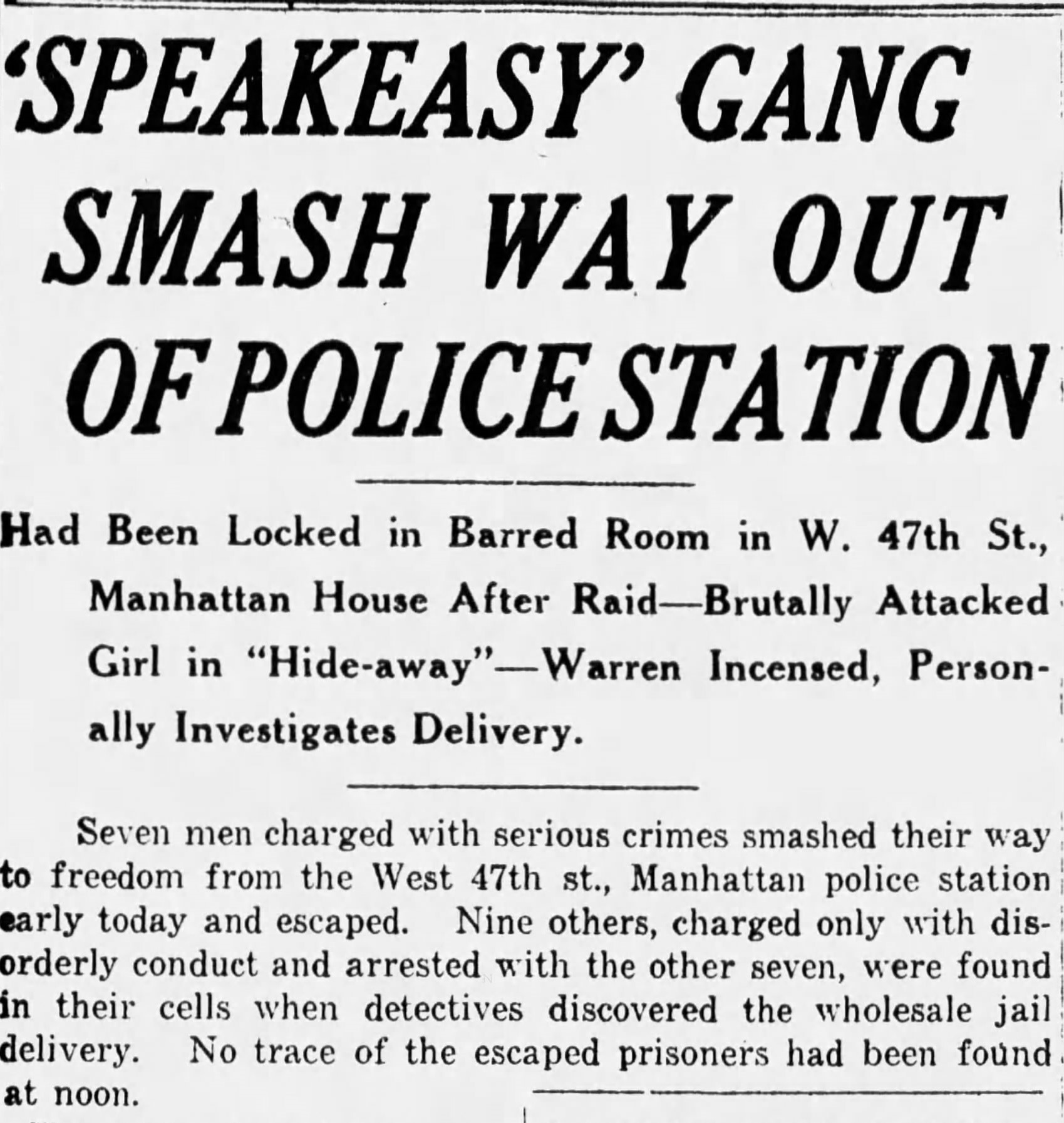
154 West 73rd Street
by Megan Fitzpatrick
In 1882, the often-forgotten architect Martin V. B. Ferdon was charged to design five rowhouses along 73rd Street, including 154 West 73rd Street. During the late 19th century, the Upper West Side was transitioning from a suburban area to a thriving urban community. The construction of rowhouses and brownstones along West 73rd Street was emblematic of this growth. This project would also be the start of Ferdon’s established career designing high-end residential buildings in the Upper West Side/Central Park West Historic District. Working with developer and architect George J. Hamilton, the pair would begin carving out the undeveloped landscape of the Upper West Side with these rowhouses.
The five, 4-story brownstones with English basements and intricate carved detailing, were completed the following year at a total cost of $22,000 each (Real Estate Record & Guide, 1882, p. 877). Ferdon employed a Neo-Grec-style take on the design and implemented elements of the newly adapted Queen Anne style. To get a sense of what this now-altered rowhouse at 154 once looked like, we can turn to its next-door neighbor, 152 West 73rd Street. Aside from the stoop and entrance, the bulk of the building has not changed much in 140 years. 152 has a striking entrance defined by stairs flanked by solid masonry walls and ornamentation such as heavy geometric newels atop the walls. This led to an entrance door framed by an ancient-looking and heavily incised with elaborate carvings, stone portico flanked by columns. Sometime after the 1940s, the portico was removed from 154 and the stoop altered from a stone wall to a cast-iron handrail.
This newly constructed row attracted some of the most prominent and notable names from Manhattan society. A large wedding reception held at 152 in 1888, hosted by a family who were active members in the nearby Church of the Divine Paternity (Fourth Universalist Church) saw the likes of Mr. and Mrs. Andrew Carnegie, Mr. and Mrs. Horatio St. John, Mrs. J. F. de Navarro A. F. de Navarro, General and Mrs. Clinton B. Fisk to name a few.
Boarding houses were very popular in this period in New York, which sought to meet a variety of needs
Not much is known about the earliest residents of the house. At the turn of the century Emma DeGroot, a 72-year-old widow, lived there with her two daughters, her son-in-law, and two Irish servants. Before the death of her husband, Theodore R. B. DeGroot, the couple contributed to a part of Brooklyn history when they invested in some property belonging to John G. Bergen, the former NYC Police Commissioner and member of the prominent Brooklyn family who owned swaths of land along Third Avenue. When Bergen died in 1867, many of his properties and plots of land were auctioned off. According to the Brooklyn Daily Eagle in 1876, the DeGroots were one of the many families who took the opportunity to acquire some well-sought-after land, purchasing many plots along Wyckoff Street and Third Avenue (Brooklyn Daily Eagle, Sept. 15, 1876).
As the neighborhood continued to develop, the demographics of the area shifted, serving young, single working people, and a boom in immigration to the West Side. We see this manifested as the building transitions from a single-family household to a boarding house around 1910. Boarding houses were very popular in this period in New York, which sought to meet a variety of needs from newly arrived immigrants looking to start their new life, to students, ‘marriageable women’, and single working women with no intention to marry.
The boarding house had numerous proprietors, managing and living on the property since its beginning. William and Elizabeth Van Name in 1910 until around 1915, and the MacMullins in 1920, again for only about 5 years. Margaret MacMullin, a widow, kept the boarding house with her three children, Marion, Robert and Frances. MacMullin was the granddaughter of Charles Treadwell, a well-known carriage manufacturer and owner of the Charles Treadwell House or later coined Wayside Tea House in Belfast, Maine. The MacMullins, despite being proprietors of a boarding house, seem to have run in socialite circles, especially her daughter Marion, who married prominent lawyer Henry Cameron Eldert (The Republican Journal, Dec. 23, 1920).
In 1925, the boarding house was run by two sisters Catherine and Rebecca Ewing. Rebecca arrived in New York in 1909 with a 2nd class ticket on the ship Columbia, departing from the port at Derry, Ireland. Her elder sister Catherine arrived two years later. The two women never married and never had children and managed the boarding house for a notable period of 25 years or more (or as much as Census records can inform us). The house was divided into 12-14 apartments and the Ewing sisters, who occupied the basement, rented the rowhouse for $350 a month. A decade later, they had the opportunity to own the property.
For a brief period, the boarding house could be identified as an Irish boarding house, as, along with the sister proprietors, three young Irish sisters lived there, Agnes, Nellie, and Kitty Foley. Interestingly, the five women noted Irish to be their primary language. In 1901, approximately 14% of the population of Ireland spoke Irish, with a considerably less amount spoken in Northern Ireland (1.3%) (Ulster University, 1987).
The house was divided into 12-14 apartments and the Ewing sisters, who occupied the basement, rented the rowhouse for $350 a month. A decade later, they had the opportunity to own the property.
Unfortunately, there were serious charges brought against one of the Ewing’s boarders in 1928. Louis Nofire, a 21-year-old boarder at 154 was identified as one of three men who drugged and attacked a woman at a speakeasy at 345 West 57th Street. Nofire was arrested with 15 other men during a raid of the illegal speakeasy on the night of the 12th of May, 1928. Seven of the arrested men, detained in a backroom ‘open cell’ of the West 47th Street Station, began to plot their escape. Utilizing a two-foot galvanized iron pipe wrenched from the wall, and relying on a rotten wooden window frame, the prisoners pried the bars of the window apart and dropped six feet to the tenement courtyard below. When the police came to transfer the arrested men, to their chagrin, they saw the bars on the window had been bent, and the prisoners gone (Daily News, May 13, 1928).
This rowhouse on West 73rd Street provides an interesting insight into the institution of New York City boarding houses, long-time boarders and boarding house proprietors.
Residents and visitors to the neighborhood will soon be captivated by the return of the portico entrance, proposed by the new building owners, hopefully restoring its historic charm.
Megan Fitzpatrick is the Preservation and Research Director at LANDMARK WEST!





